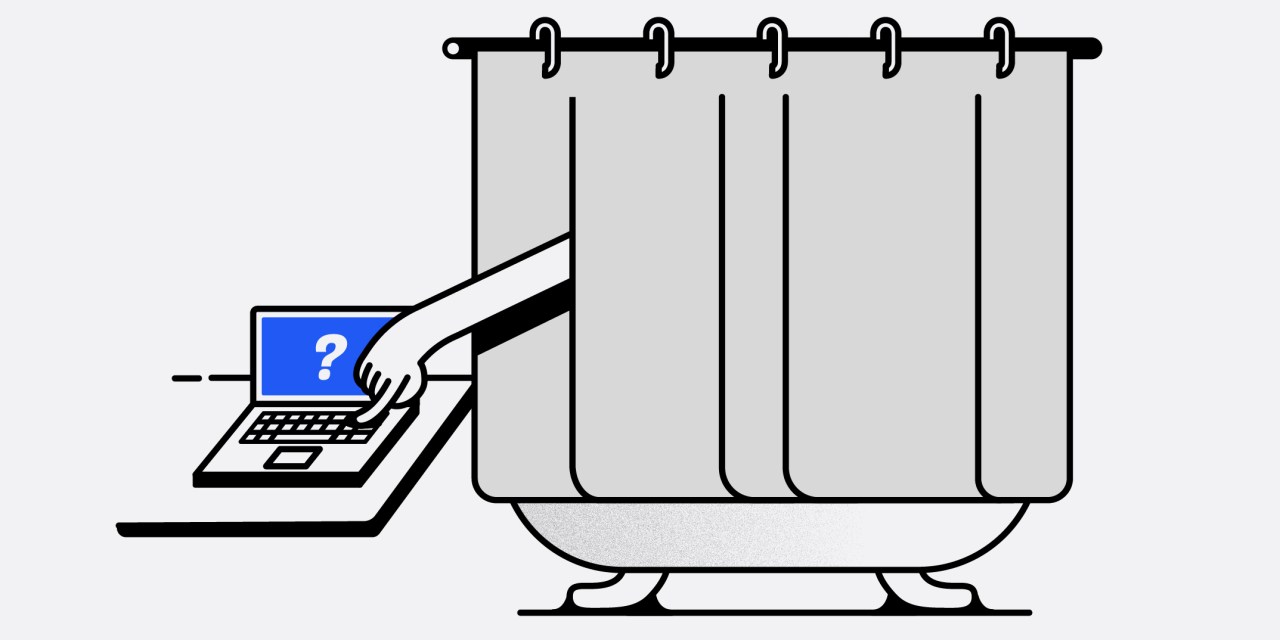Shower yet? Bad habits abound as burnout continues to plague workforces

Stop doomscrolling and turn off that podcast — this story could be about you.
Plummeting cases of coronavirus may give many of us a glimmer of hope regarding a return to normalcy, but for the moment the pandemic continues to wreak havoc on work life. As the insurance company The Hartford recently reported, burnout levels remain high, affecting some 60% of the U.S. workforce and urgently impacting employee health and productivity.
That’s led many of us (30%) to become less engaged with work, according to the same study, which polled 2,000 U.S adults, and just about as many (25%) to have difficulty focusing on our jobs — resulting in many of us adopting some seriously bad habits.
For one, we’re working much too much. While the past two years have delivered a spike in productivity, nearly one-third of employees say they work more than the traditional 40-hour workweek, according to a survey of 1,000 workers in the U.S. by Prodoscore, which makes employee visibility and productivity intelligence software for clients including the media company Gannett and tech services provider AppSmart.
But beyond overworking, many of us appear to be goofing off, doing chores and just about anything else but work. During business hours, we are busying ourselves with activities like housework (41%), scrolling social media (35%), napping (27%), binge-watching TV (22%) and listening to podcasts (22%). Meanwhile, nearly one-third of us (30%) confess to putting off showering until later in the day.
It’s all made for a work-from-home reality that, despite its benefits, really stinks — and is ringing alarms among employers.
“While productivity has increased overall with the shift to a WFH model, not every one of your employees is going to be able to manage the change with equal skill,” said David Powell, president of Prodoscore. While tossing in a load of laundry may be acceptable, he pointed out, a boss doesn’t want her people spending hours doing housework during the workday. On the other hand, she doesn’t want to see her employees at their desks for 12 hours a day either, ignoring family and friends — and their health. “It’s all about balance,” he said.
Of course, there’s been an enormous upside to WFH life as well. An overwhelming majority of those Prodoscore surveyed (82%) said they’re happier working remotely versus in an office. For one thing, many report feeling mentally and physically healthier since they began working remotely and have been empowered by the flexible work schedule it affords.
Even as numerous studies and news reports have revealed an uptick in mental health problems during the pandemic, more than one-third of those in Prodoscore’s survey (36%) say their mental health has actually improved, with 30% saying they’re now able to see family and friends more often and 40% reporting they have time to exercise. Meanwhile, 44% share that their physical health has improved over the past two years.
How can bosses keep on top of their workforce to ensure they are not overworking, taking proper care of themselves, and not watching reruns of The Office? Employee monitoring software for one, with the demand for such technology on the rise.
Switching up employee routines is another. Stephen Curry, CEO of the e-signature service CocoSign, reports having an employee who had a hard time staying productive while WFH because she got easily distracted by household chores and other nonwork activities. To remedy that, he revised her schedule so she could work at a remote office setup for a few hours each day, then from home the rest of the time. Doing so improved the employee’s productivity dramatically.
Open communication and frequent check-ins with employees are also key. Curry said such tactics ensure that his people are getting regular feedback about their work — while helping him maintain employee accountability. He also uses communication tools that give employees a platform to share what they’re working on and request feedback on their work. “It allows me to get a clear picture of what is getting done and what things are in the pipeline,” he added.
Other employers stress that what someone produces on any given workday is what’s important — not whether or not he or she showers at teatime.
“Managers need to come to terms with the fact that they don’t control employees’ work lives as much in remote settings,” said Daniel Sathyanesan, founder and CEO of Winden, a company that provides banking services for internet-based businesses and entrepreneurs. Taking time to fold laundry or take care of one’s child is no big deal as long as employees remain productive and accessible, he suggested.
“The fact is that changing the setting of work changes what work looks like,” he said. “But as long as an employee’s productivity remains the same, managers should understand that this is a tradeoff for remote work. If you want an office environment, you’ll need to invest resources in an office setting.”